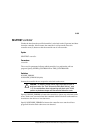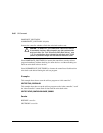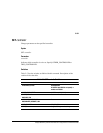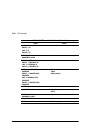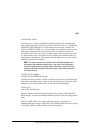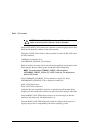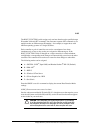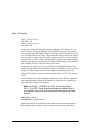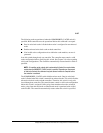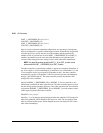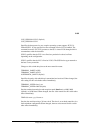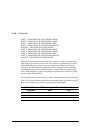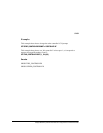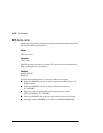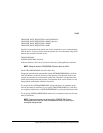
5–96 CLI Commands
PORT_1_ID=(n1,n2,n3...)
NOPORT_1_ID
PORT_2_ID=(n1,n2,n3...)
NOPORT_2_ID
Assigns one to fifteen SCSI target ID numbers (0 through 15) to either port 1 or to
port 2. A total of 15 target ID numbers can be assigned to both ports. For example,
port 1 has eight target ID numbers and port 2 has seven target ID numbers for a total
of 15. Another example, port 1 has 15 target ID numbers and port 2 has none. Host on
port 1 can only see targets assigned to port 1 and hosts on port 2 can only see targets
assigned to port 2. If two or more target ID numbers are entered, the numbers must be
enclosed in parentheses and separated with commas. When changed, you must restart
both controllers in order for the new setting to take effect.
A controller can present up to 32 units to the host on each target ID number. Unit
numbers identify both the target ID number and the LUN. However, access to LUNs 8
through 31 requires support by both the host adapter and operating system. For
example, D203 indicates a disk is addressed through target 2, LUN 3. D5 is target 0,
LUN 5.
If two controllers are in a dual-redundant configuration, both controllers support the
same target ID numbers. When the ID numbers are changed on one controller, the
other controller is automatically updated.
NOTE: Use the PORT_1_PREFERRED_ID (or PORT_2) switch along with the
PORT_1_ID (or PORT_2) switch to specify which targets are assigned to each of
your controllers on port 1 (or 2). If you do not specify the preference of your targets
as you add them, the controller automatically prefers all of the targets to the “other
controller.”
MIRRORED_CACHE
NOMIRRORED_CACHE (Default)
Enables the mirrored-write-back-data cache feature on dual-redundant controllers.
When changed, both controllers restart for the new switch setting to take effect.




